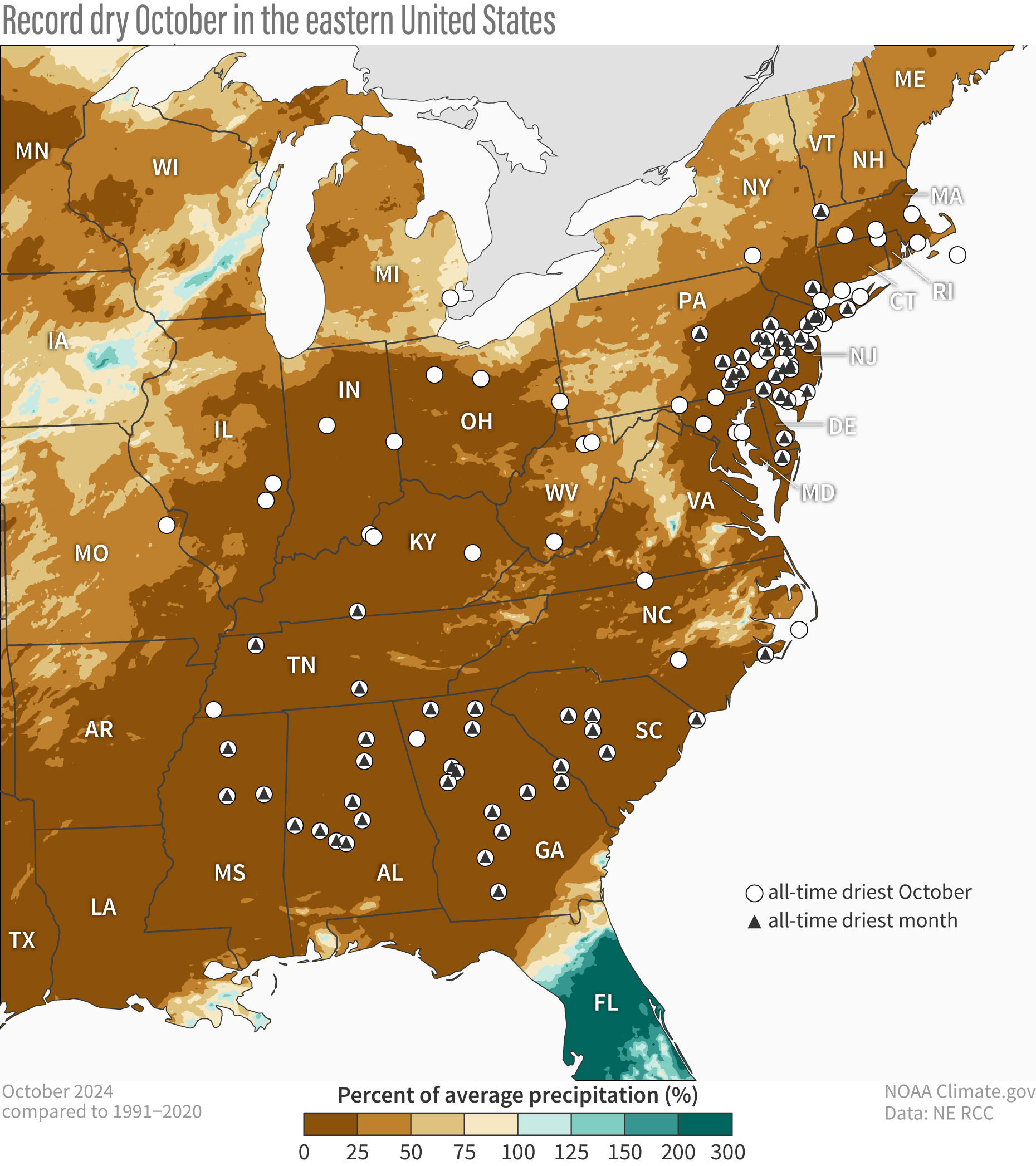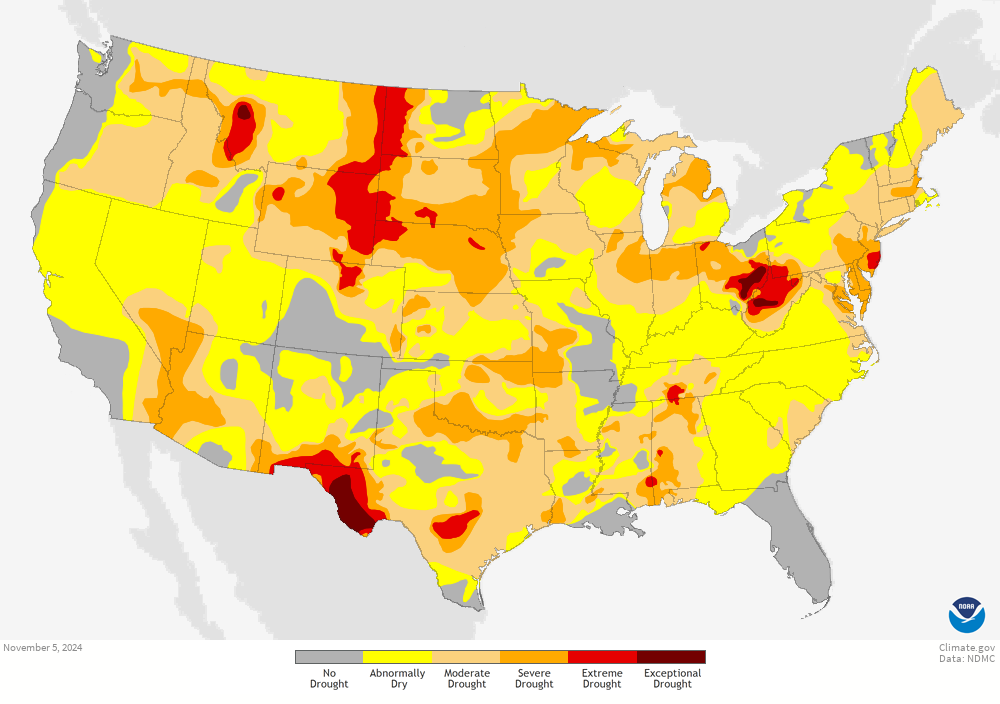
Our changing climate continues to contribute to another record-setting month, with temperature extremes and drought expansion across much of the US.
Close to 80 climate stations across the country set new records reporting that October 2024 was the all-time driest month, according to a recent statement from the National Oceanic and Atmospheric Administration (NOAA). Major cities across the eastern US that reached record level included New York City, Newark, Atlanta, and Philadelphia.
At the same time, an additional 50 climate stations experienced their driest October in recorded history, including Detroit, St. Louis, Memphis, and John F. Kennedy Airport in New York.
Measurable rainfall, which is 0.01 inches (0.02 cm) or more, was at a minimum across the eastern half of the U.S. throughout October, which NOAA forecasters say is "fairly rare."
A good number of locations recorded more than 30 days with no measurable rain, including Philadelphia, Atlanta, and Columbia, South Carolina. Preliminary data from NOAA showed that with the exception of Florida, with its peninsula picking up a significant amount of rain from Hurricane Milton within 24 hours, precipitation for the month of October across the eastern US spanned from 25% or less of normal to near normal.

In addition to October being historically dry this year, it was also abnormally warm with new records set both nationally and at the statewide levels. NOAA’s monthly US climate report revealed that the contingent U.S. average temperature for the month, 59 degrees Fahrenheit (15 degrees Celsius), took the number two spot in its 130-year climate record for the country, coming in behind October of 1963.
States that recorded their warmest October were Texas, Utah, New Mexico, and Arizona, with another 14 states coming in at a top-10 warmest in the record books.

Both record warmth and the lack of rain contributed to a quick expansion of locations already hit hard by drought conditions, according to NOAA’s National Centers for Environmental Information.
The U.S. Drought Monitor report published on Oct. 29 shared that across the lower 48 states, the number of states experiencing drought conditions increased to 87.16%, a new record for the program since it began 25 years ago.
In fact, comparing where we were Oct. 1, 2024, to Nov. 5, 2024, the level of drought increased anywhere from one to three categories during that time period. As a result, wildfire activity notably increased in parts of the Northeast and winter crop planting was delayed across the Southeast.







